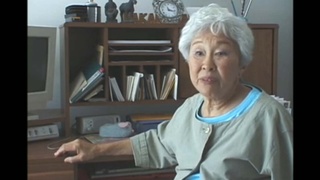Interviews
Differences in discrimination
The only time we got discrimination is when we went to medical school, cause…of course you know, medical school discriminated against women. But I think because I was oriental in Chicago, where they never saw an Oriental, I think I was sort of a curio to them, you know. They wondered what I was like. And when I went to Chicago, there was no discriminationing – in restaurants or anywhere…nightclubs or…like it was here in Los Angeles, you know. We were completely discriminated against, many places. We’d go to a restaurant and they wouldn’t wait on us. But when I went to Chicago, I was at first a little reluctant about going to those places, but I was accepted and so then I got used to going to those nightclubs and restaurants and so on.
Date: March 31, 2005
Location: California, US
Interviewer: Gwenn M. Jensen
Contributed by: Watase Media Arts Center, Japanese American National Museum






